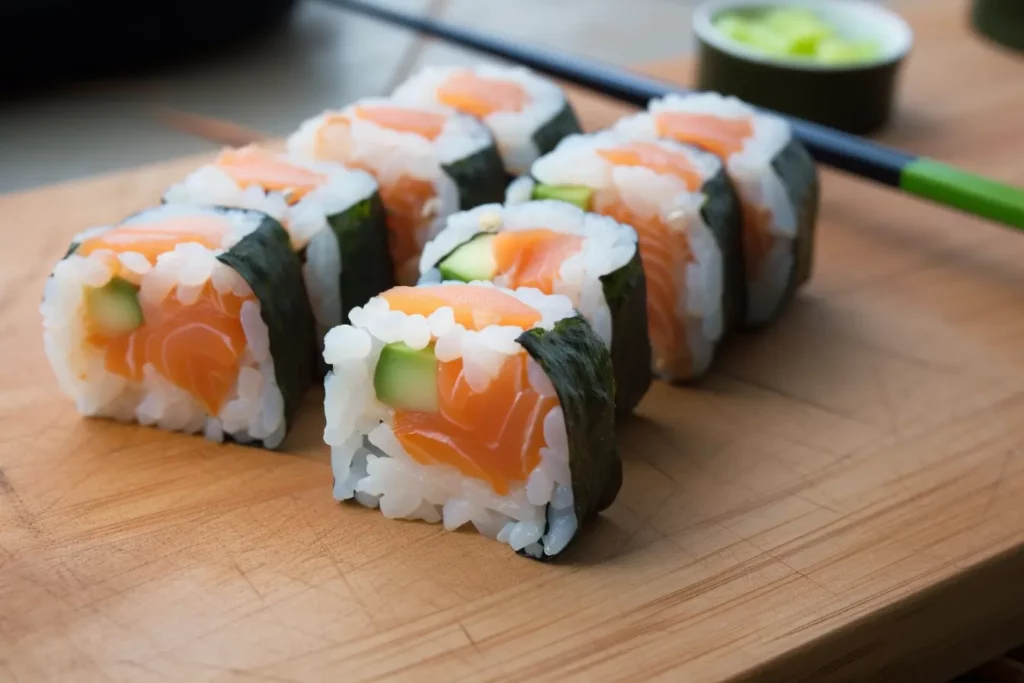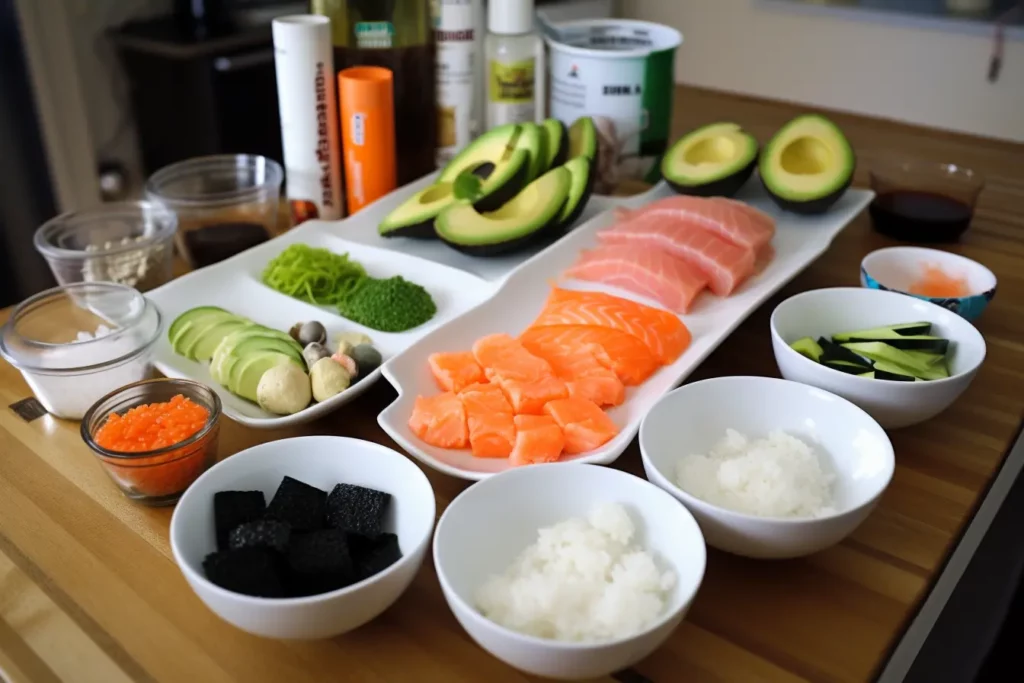The fascinating world of sushi not only represents the culinary experience of a respected millennia-old craft, but also reveals the changes and influences it has undergone in its journey around the globe. From the traditional forms that originated in Japanese cuisine to the innovative and stunning representations that can be found around the world today, the history of sushi is a steady flow of creativity and adaptability. Our in-depth look into the diverse variations of sushi will take us through the rich tapestry of classic and modern styles, shed light on the cultural influence that sushi has on the gastronomy of different countries, highlight the health-promoting aspects of sushi and explore the exhilarating aesthetics of sushi presentation.
Classic and modern sushi styles
It is fascinating to watch how the traditions of sushi cuisine develop in the hands of talented chefs worldwide. The convergence of classic and modern sushi styles offers an exciting spectrum of flavors, textures, and aesthetic presentations.
Sushi originates from the Japanese tradition and is deeply rooted there. The classic style is simple, requires precision and focuses on the purity of the ingredients. The main challenges are to find the right balance point between sushi rice and fish and to achieve harmony between the flavors. It ranges from the ubiquitous nigiri and maki to the lesser-known species such as inari and temaki.
With globalization, sushi styles have evolved in different regions of the world, and today there are numerous modern variants. In the USA, for example, California and Philadelphia rolls are served, the popularity of which rivals the classic sushi styles. These modern styles are often opulent and include a variety of ingredients, including avocado, cream cheese, and even fried chicken or coconut shrimp.
In Europe, people tend to prefer minimalist sushi styles inspired by Scandinavian cuisine. For example, the ‘Nordic Sushi’, which is popular in Stockholm, combines local seafood such as halibut, mackerel or krill with traditional sushi rice, coloured with natural food colourings.
Even in South America, sushi has gained momentum of its own, influenced by the local ingredients and flavors. The fusion of sushi with the flavors of the Amazon is an illustrative example of this. Amazon sushi, for example, uses tropical fruits and fish from the Amazon.
In fact, sushi is a culinary landscape that fosters dynamism and creativity, and the boundaries are wide when it comes to creating new culinary experiences. It is impressive to see how this traditional dish maintains its cultural core despite the changes. It’s important to think outside the box and realize that food is more than just food intake; it is a form of expression, a social experience, and a way to explore and understand different cultures. Even though sushi consumption continues to grow, its constant evolution reminds us that no culture or cuisine is static. Whether you’re a fan of the classic sushi style or looking for new and exciting flavors, the world of sushi has something for everyone.

Sushi and its cultural influence
Title: Sushi on the Global Stage: Taste, Influence, and Innovation
Sushi, this small but incredibly versatile way of eating, has spread largely from Japan and is now known and loved all over the world. But how does this hype around sushi influence cultures around the world?
Especially in the world’s major metropolises, sushi has become an integral part of the urban lifestyle. It stands for a lifestyle that combines healthy food, a high appreciation for aesthetics and quality, and a penchant for foreign cultures.
Whether it’s New York’s high-end restaurants or London’s fast-food chains, sushi is everywhere. It has become a phenomenon that has profoundly influenced the culinary cultural scene. Sushi is much more than just a meal, it is a social event, an artistic expression and a manifestation of interculturality.
Due to the growing popularity of sushi, traditional Japanese food culture elements are also being integrated into other cultures. The wabi-sabi philosophy, which values imperfect beauty and impermanence, is one such element that is also applied to Western decoration and presentation techniques.
In addition, sushi’s unique flavor profiles and culinary minimalism are a visual and sensory experience that inspires many restaurateurs. There is no shortage of creative interpretations of sushi, often blending the culinary traditions of different cultures.
Innovative fusions, such as incorporating Caribbean or South American ingredients, are becoming increasingly popular – the Fusion Sushi reflects the global intertwining of cultures in one delicious bite.
But the sushi trend is not only noticeable in the kitchen. Food production chains around the world are increasingly geared towards sushi production. New jobs are being created in the fishing industry and in areas where sushi ingredients are grown, such as short-grain rice and seaweed.
The global popularity of sushi also has a noticeable impact on issues such as sustainability and ocean conservation. The increasing demand for high-quality fish has raised awareness of sustainable fisheries and aquaculture.
Overall, it can be said that the global sushi movement is connecting cultures, blurring culinary boundaries, and producing colorful, flavorful innovations. Perhaps the best part, however, is that it invites citizens of the world to discover new tastes and traditions while eating responsibly.
So, the new art of sushi appeals to both our intuitive senses and our intellectual hunger, allowing us to reinterpret the world through the lens of taste. Sushi is no longer just a part of Japanese food culture, but has developed into a culinary symbol of global international understanding. So, the next round of maki rolls, please!
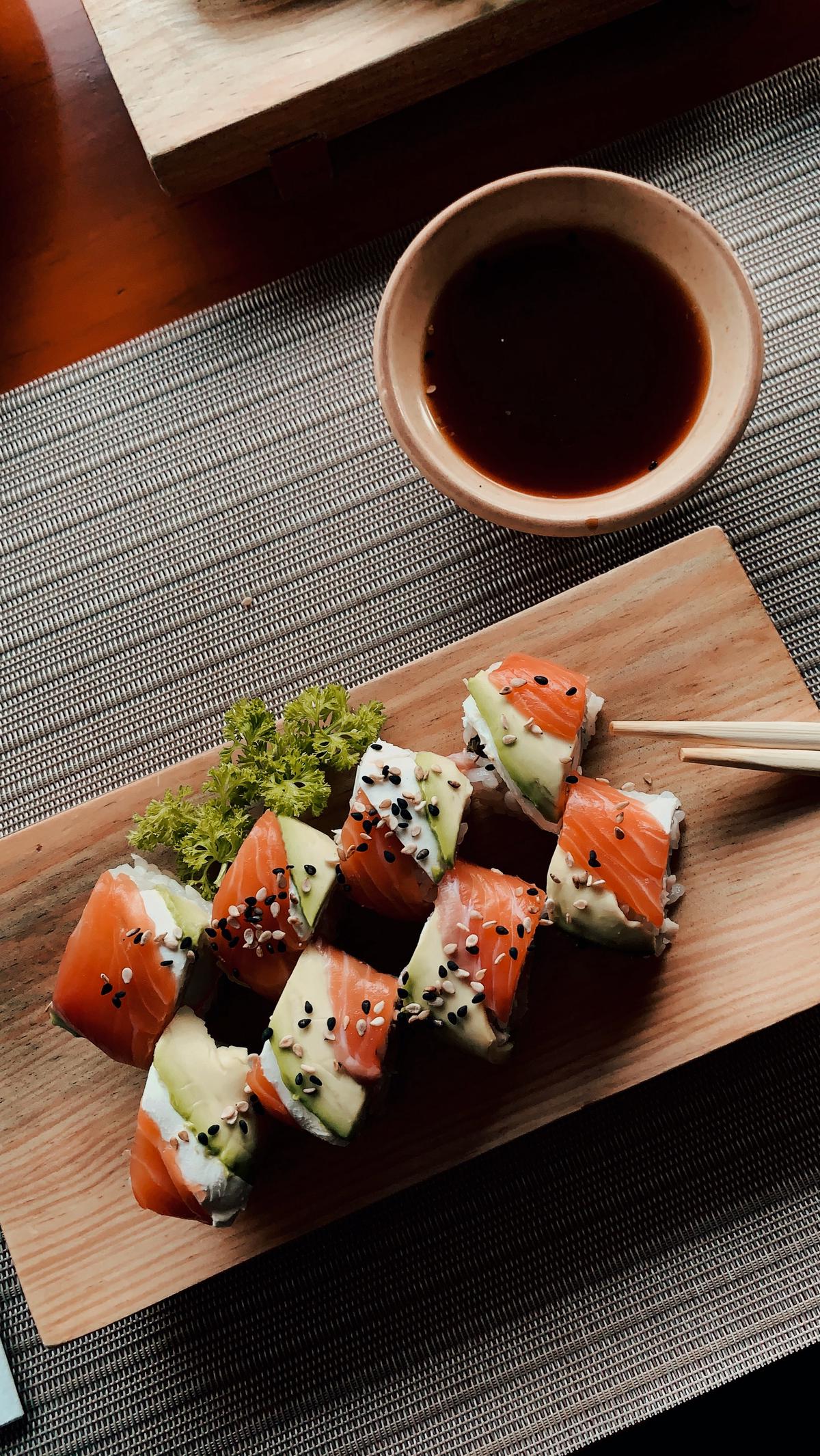
Photo by derekduran on Unsplash
Influence of sushi on diet and health trends
The growing popularity of sushi has ushered in an exciting era in the culinary world, where the exquisite and exotic play an important role.
In particular, sushi has gained a lasting presence in the urban lifestyle, both as a healthy fast food option and as an upscale dining experience.
The minimalist aesthetic and natural taste of sushi have made it a favorite of modern urban society in search of authentic dining experiences.
What’s even more remarkable is that sushi has turned the culinary culture scene on its head. Increasingly, chefs and restaurateurs around the world are embracing elements of traditional Japanese food culture to create new culinary highlights in their own kitchens.
From the incorporation of wasabi and soy sauce into Western dishes to creative interpretations of sushi such as sushi burritos and sushi cakes, it showcases the immense creativity and versatility that sushi has brought to the world.
The craze for sushi has also sparked a significant global blending of cultures. Fusion Sushi, which combines Japanese preparation methods with ingredients and flavors from other culinary traditions, is a vivid testimony to this. An example of this is Korean kimbap, which is often referred to as Korean sushi and harmoniously combines elements from both cuisines.
However, the impact of the sushi trend extends beyond gastronomy and has also influenced food production and environmental protection. With the high demand for fish for sushi, many farms have adopted sustainable fishing measures to support ocean conservation. In addition, more and more sushi restaurants are using locally grown plant-based ingredients to promote the seasonal and regional origin of the food and reduce the environmental impact of food production.
After all, sushi has gained its importance as a culinary symbol of global international understanding. Over time, through the ensemble work of finely chopped ingredients in a sushi roll, people from different cultures and backgrounds have joined forces. Much like sushi brings the different flavors together, it also seems to bring people together.
So, not only has sushi influenced our diet and health trends, but it has also redefined the way we think about food, cultures, and our relationship with the planet. In its continuous evolution, sushi’s impact on the world remains powerful and lasting, providing room for infinite creativity and culinary passion.
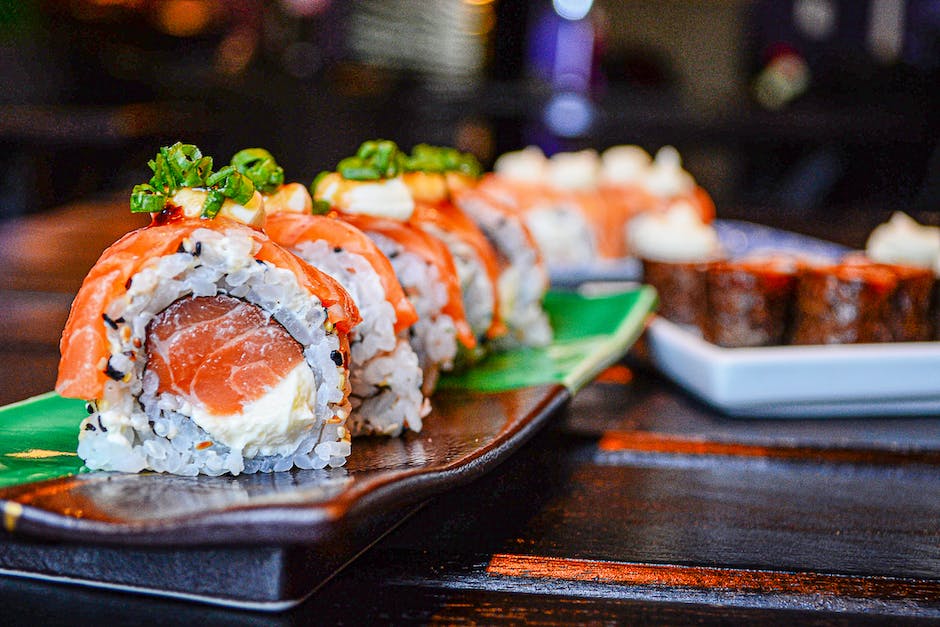
Innovative Sushi Presentation and Aesthetics
Now that an in-depth understanding of sushi culture and trends has been developed around the world, it’s time to turn attention to those novel ways of presenting sushi that make sushi a visual delight and highlight the lifestyle aspect of this iconic dish.
The presentation of sushi is an art in itself. It requires not only skill and experience, but also a creative vision and understanding of visuality to capture and amplify the essence of sushi. Design Sushi is a creation that is as pleasing to the eye as it is to the palate.
In today’s Instagram-driven world, the visual element has become highly valued when it comes to food. Reinterpreting sushi for the digital zeitgeist means using vibrant colors, innovative shapes, and unique combinations. It is the interplay between tradition and modernity that makes sushi appear in a new light and evokes a new appreciation for this Japanese art form.
Fusion sushi is becoming increasingly popular around the world, and its cross-border nature opens up a platform for chefs to experiment and create unique flavor combinations. These fusion sushi pieces exude globality and at the same time pay homage to the beauty of diversity and multiculturalism.
There is a growing movement to maintain sustainability in the sushi sector. Organic sushi, which uses sustainably caught fish, is a strong statement against overfishing and emphasizes awareness of the planet. The presentation of organic sushi reflects the purity and simplicity of nature and supports ocean conservation efforts.
Sushi has stood the test of time as a symbol of global culinary diplomacy. Sushi seminars, where participants create their own rolls and learn more about the art and tradition of sushi, are very common. These events not only promote awareness of Japanese culture and history, but also promote interculturality and respect for other cultures.
In conclusion, although presenting sushi can be challenging, creative approaches and understanding the nuances of this art can yield glorious results. Whether it’s creating visually striking designs, using fusion sushi to connect cultures, or promoting sustainability in food production, sushi is much more than just a meal: it’s a visual delight and a true lifestyle statement.
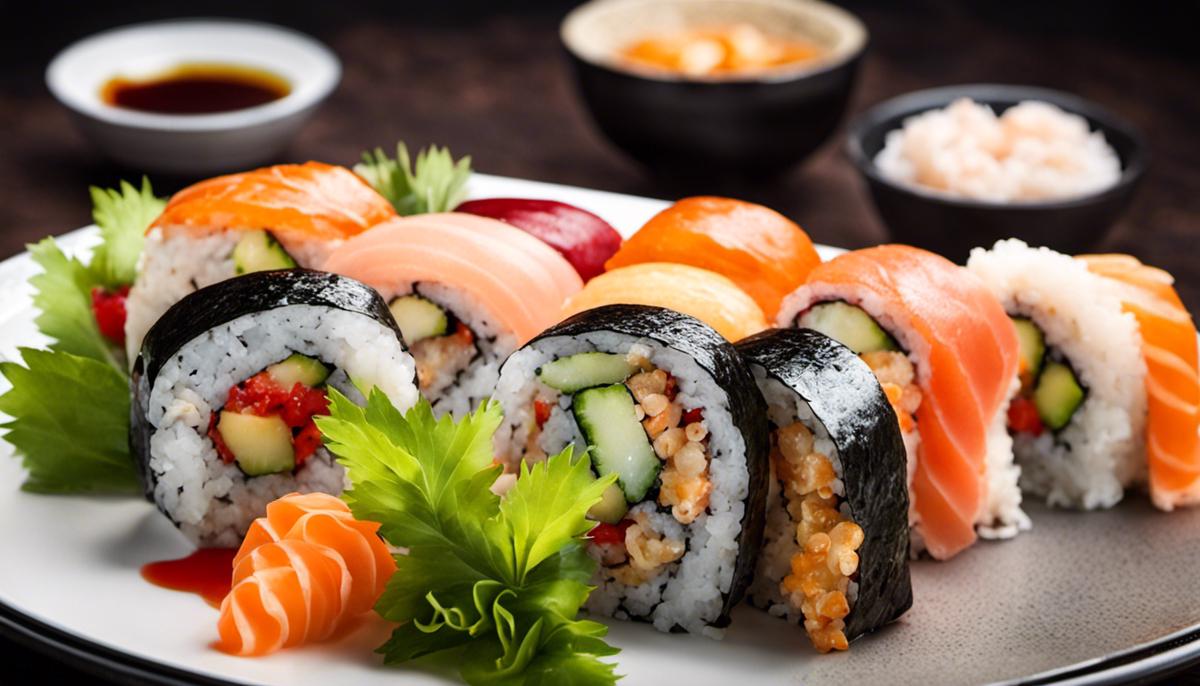
After traversing the multi-layered world of sushi, a deep appreciation for this amazing culinary form opens up to us. Sushi’s trend-setting creativity and unique charm are evident not only in the artwork served on our platters, but also in how it is able to build bridges between cultures and make a healthy contribution to our daily lives. Sushi has evolved over centuries, taking on new forms along the way, both honoring its successful past and highlighting its exciting influence on future gastronomy. With this deep admiration for sushi, we realize that this journey is just the beginning – the diversity and complexity of sushi will surely continue to inspire and challenge us.

